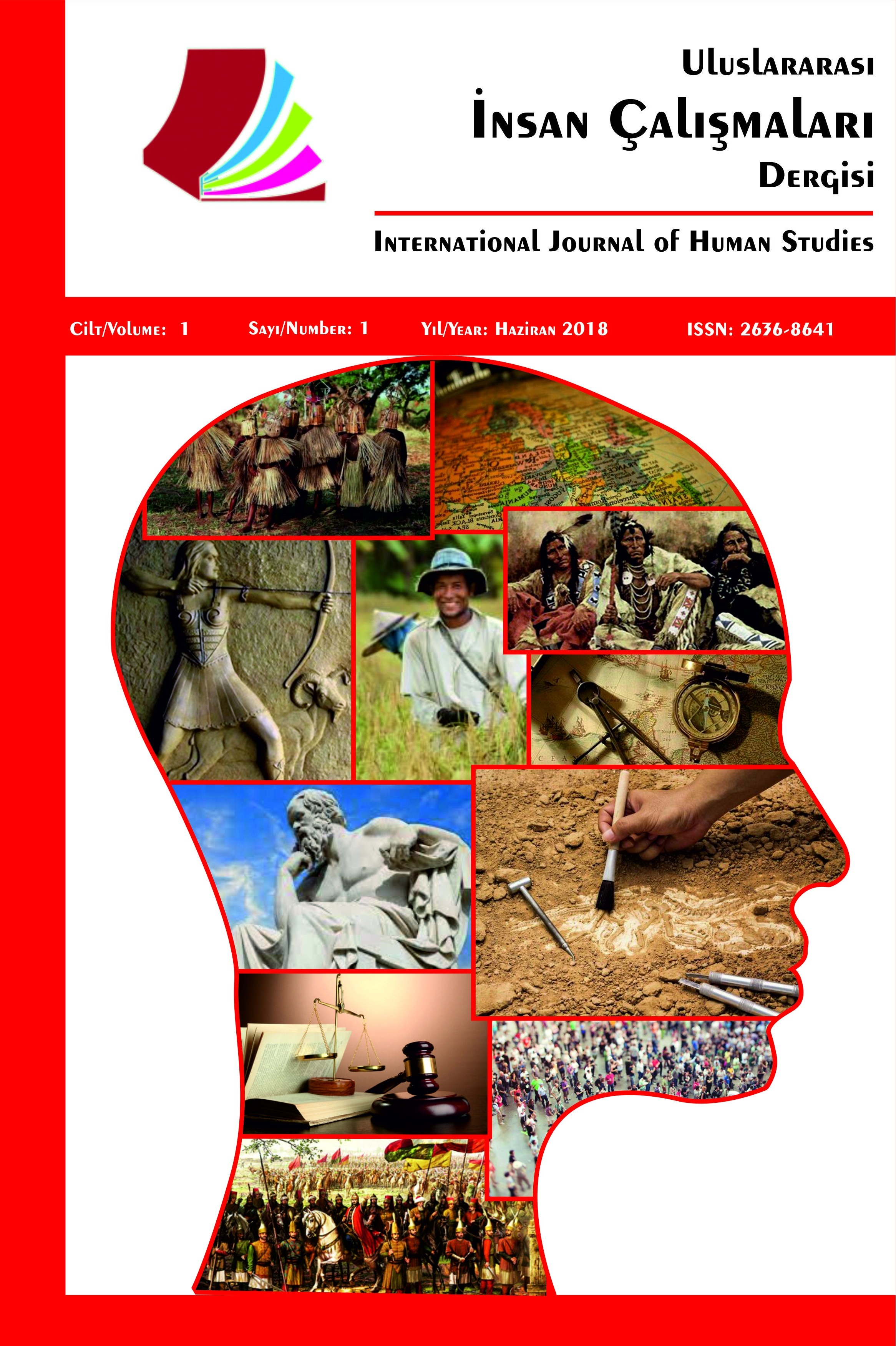Cervantes’in Don Kişot’unda ve Yaşar Kemal’in Dağın Öte Yüzü adlı Üçlemesinde Hayalgücünün Rolü
Hayaller, bireyleri katı sosyal kurallar, adetler ve gelenekler karşısında baskı ve çaresizlik duygularından kurtarmak için özgürleştirici bir rol oynayabilir. Toplumsal gerçeklerin ezici yükü altında tatmin edici bir yaşam sürmek mümkün olmayabilir. Bireyler, sosyal deneyimlerin ve gerçekliklerin acı verici etkilerinden uzaklaşmak istedikçe, hayallerin, bireysel ve sosyal sorunları hafifleten hipnotize edici etkisine başvururlar. Cervantes’in Don Kişot’unda ve Yaşar Kemal’in Yer Demir Gök Bakır ve Ölmez Otu’nda, hayal gücünün insan davranışlarını nasıl şekillendirdiğini ve sosyal tabuları nasıl altüst ettiğine şahit olmak mümkündür. Başka bir hayali dünyanın yaratılması, istenmeyen toplumsal gerçeklerle gecikmeli yüzleşmeden kaçma arzusunu yansıtır. Bireyler, mitler, halk hikâyeleri ve sahte hikâyeler aracılığıyla kendilerini teselli eder ve umutlarını güçlendirir. Her üç romanda da sosyal ve bireysel özgürlük ve sorumluluk, zaman ve mekânı aşarak toplumdaki kısıtlayıcı geleneksel kurallara ve sınırlara ağır basar. Sosyal ve kişisel depresyondan kurtulmanın tek yolu hayal gücü gibi görünüyor. Yaşar Kemal ve Cervantes, abartılı çılgın karakterlerle toplumlarına ışık tutmak için ahlaki disipline sahiptirler. Don Kişot, kendi toplumunda ve toplumunun kurumlarında sıkışıp kalır ve Yaşar Kemal’in Ölmez Otu ve Yer Demir Gök Bakır’ındaki köylülerin umutsuzca hikâyeler yaratıp, Adil ve Sefer gibi otoriter insanların kontrolü altında baskıcı yaşam koşullarından sakınmaları gerektiğine inandıkları gibi, kurumlaşmış topluma karşı hayal gücüyle savaşır. Hem Cervantes hem de Kemal hayali dünyalarda yaşayan karakterler yarattı ve gerçeklik ile hayal gücü arasındaki çizgiyi bulanıklaştırmanın önemli bir yolu olarak hayallere başvurdu. Bu nedenle, bu çalışmanın amacı, bireysel ve sosyal özgürlük odaklı varoluşçu eserler olan Cervantes'in Don Kişot ve Yaşar Kemal’in Yer Demir Gök Bakır ve Ölmez Otu’nda hayallerin ve hayal gücünün insan davranışı üzerindeki etkilerini araştırmaktır.
Anahtar Kelimeler:
hayalgücü, hayaller, Cervantes, Yaşar Kemal, Don Kişot, Yer Demir, Gök Bakır, Ölmez Otu
The Role of Myths and Imagination in Cervantes’ Don Quixote and Yaşar Kemal’s The Other Face of the Mountain Trilogy
Dreams can play a liberating role to free individuals from repression and feelings of helplessness in the face of strict social rules, customs and mores. It may not be possible to lead a satisfying life under the overwhelming burden of social facts. As individuals want to be alienated or distanced from the painful effects of social experiences and realities, they resort to the hypnotizing influence of dreams that alleviate their individual and social problems. In Miguel de Cervantes Saavedra’s Don Quixote and Yaşar Kemal’s Iron Earth, Copper Sky and The Undying Grass, it is possible to witness how imagination shapes human behaviour and subverts social taboos. The creation of another imaginary world by the characters reflects a desire to escape from the delayed confrontation with unwanted social facts. Characters console themselves and reinforce their hopes through imagination, folk tales and false stories. In all three novels, individual freedom and responsibility outweigh restrictive conventional rules and boundaries in society by transcending time and space. Imagination seems to be the only way of liberation from social and personal depression. Both Yaşar Kemal and Cervantes bear the moral discipline to expose their societies through extravagantly insane characters. Don Quixote is trapped in society and its institutions. He fights against institutionalized society through his imagination, just as Kemal’s villagers desperately create stories and believe in them to avoid their oppressive living conditions under the control of domineering people such as Adil and Sefer in The Undying Grass and Iron Earth, Copper Sky. Both Cervantes and Kemal created characters that live in imaginary worlds and resorted to dreams as an important way to blur the line between reality and imagination. Therefore, the aim of this chapter is to explore the effects of imagination and dreams on human behaviour in Cervantes’ Don Quixote and Kemal’s Iron Earth, Copper Sky and The Undying Grass, which are existentialist works centred on individual and social freedom.
Keywords:
imagination, dreams, Cervantes, Yaşar Kemal, Don Quixote, Iron Earth, Copper Sky, The Undying Grass,
___
- Aytaç, Gürsel. (1983). “Yasar Kemal’de Düş ve Gerçek [:] ‘Yer Demir Gök Bakır’ Üzerine Bir İnceleme”. Yazko Edebiyat (34): 91-99.
- Belge, Murat. (1994). “Yasar Kemal’in Üçlüsü Üzerine”. Edebiyat Üstüne Yazılar. İstanbul: İletişim Yayınları. 230-232.
- Busi, Frederick A. (1974). “Waiting for Godot: A Modern Don Quixote.” Hispania, 57(4): 881, 883.
- Çiftlikçi, Ramazan. (1997). Yaşar Kemal: Yazar-Eser-Üslup. Ankara: T.C. Kültür Bakanlığı Yayınları.
- Holmes, Theodore. (1970). “Don Quixote and Modern Man.” The Sewanee Review, 78(1): 40-59.
- James, William. (1923). The Principles of Psychology, Vol. 1. New York: Henry Holt.
- Kemal, Yaşar. (2004). Ortadirek. İstanbul: Yapı Kredi Yayınları. _____. (1976). Ölmez Otu. CemYayınevi. _____. (1976). Yer Demir Gök Bakır: Dağın Öte Yüzü 2. İstanbul: Yapı Kredi Yayınları.
- Moore, A. John. (1958). “The Idealism of Sancho Pancho.” Hispania, 41(1): 73-76.
- Naci, Fethi. (1998). Yasar Kemal’in Romancılıgı. İstanbul: Adam Yayınları.
- Parla, Jale. (2000). Don Kişot’tan Bugüne Roman. İstanbul: İletişim Yayınları.
- Saavedra, Miguel de Cervantes. (2000). Don Quixote. London: Penguin.
- Schlembach, Christopher. (2019). “Don Quixote and the social system: Interpreting Ronald Laing’s concept of ontological insecurity from Alfred Schütz’ and Talcott Parsons’ theories of social action”, Journal of Classical Sociology 20 (3)
- Schütz, A. (1964) “Don Quixote and the problem of problem of reality”. In: Brodersen, A (ed.) Collected Papers II: Studies in Social Theory. The Hague: Martinus Nijhoff, 135–158.
- Sobre, J.M. (1976). “Don Quixote, the Hero Upside-Down.” Hispanic Review, 44 (2): 127-141.
- Veguez, Roberto A. (2005). ““Don Quixote” and 9-11: The Clash of Civilizations and the Birth of the Modern Novel.” Hispania, 88 (1):101-113.
- Başlangıç: 2018
- Yayıncı: Zeynel KARACAGİL
Sayıdaki Diğer Makaleler
Covid-19 Pandemisi ve Ulus Devletler: Küreselleşmenin Sonu Mu?
Ebeveynlerin Cinsiyet Kalıp Yargılarının Oyuncak Seçimine Etkisi
Elif TABAK, Güzin Yasemin TUNÇAY
Sağlık Personeli Adaylarının Psikolojik Yardım Almaya İlişkin Tutumlarının İncelenmesi
“Kumalık” Olgusunun İlk Eş ve Kuma Üzerinden Yankısı
Kesişimsellik Teorisi ve Farklılıkların Feminizmi
Cervantes’in Don Kişot’unda ve Yaşar Kemal’in Dağın Öte Yüzü adlı Üçlemesinde Hayalgücünün Rolü
